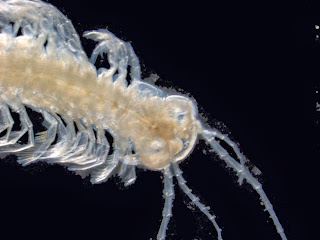
"The Flight of the Living Dead", is just how John Hafernik, a Biology professor of San Francisco State University calls it when bees leave their hives, fly around in a disoriented way, get attracted to light, and then fall and wander around that reminds him of zombies in the movies.
 Last October, his team verified that there has been a bee infestation in Burlington, Vermont, when an amateur beekeeper found bees acting erratically and eventually killed them after seeing parasites to cause this dementia.
Last October, his team verified that there has been a bee infestation in Burlington, Vermont, when an amateur beekeeper found bees acting erratically and eventually killed them after seeing parasites to cause this dementia.John Hafernik first accidentally discovered these zombees in California last 2008, after that, cases were reported from Oregon, Washington state, California and now, South Dakota.
The culprit for this bizarre phenomena? A fly called Apocephalus borealis that latches mainly on bumblebees and yellow jacket hornets, "But not honeybees", according to Hafernik. Once the flies latch on to bees with their eggs, the bees starts to exhibit the zombie-like behavior, when the eggs hatch, they generally drop dead after about five minutes, he added.
Read the complete article here, or check out the website run by Hafernik and his colleagues at ZomBeeWatch.org.
{[[' ']]}
']]}

























































